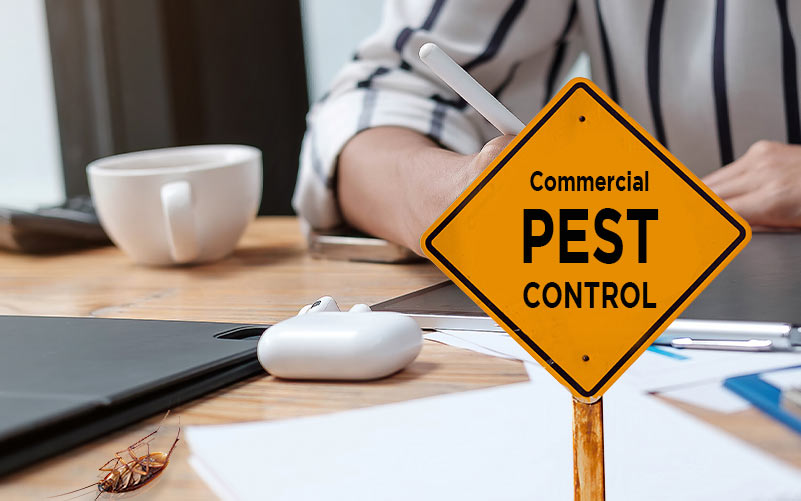Bed Bug Treatment Breakdown: Contrasting Chemical Vs. Non-Chemical Solutions
In the realm of pest control, specifically when dealing with the relentless issue of bed bugs, the choice in between chemical and non-chemical therapy solutions can be a pivotal one. Both techniques offer distinct advantages and drawbacks, affecting elements such as efficiency, security factors to consider, and general cost. By checking out the nuanced information of each technique, a clearer understanding of which path to go after in addressing a bed bug invasion can be attained.
Performance of Chemical Therapies
Chemical therapies for bed insect infestations have actually been extensively identified for their potent and fast efficiency in eliminating these insects. When taking into consideration the effectiveness of chemical treatments, it is important to understand that they can offer a quick and complete option to a bed pest problem. Professional pest control operators usually rely on insecticides to target bed bugs at different phases of their life process, including nymphs, adults, and eggs. These chemicals commonly work by interrupting the bed bugs' nerve system, causing paralysis and ultimate fatality.
Furthermore, chemical therapies have the benefit of offering recurring impacts, indicating that they can proceed to get rid of bed bugs even after the preliminary application. This residual activity is specifically helpful in combating any kind of potential re-infestations. In addition, the quick action of chemical treatments can bring alleviation to people encountering extreme bed insect invasions, permitting them to gain back control of their space quickly.
Security Worries With Chemical Solutions
One crucial facet that calls for cautious consideration when using chemical remedies for bed pest therapy is making sure the safety and security of occupants and the environment. Direct exposure to particular chemicals used in bed pest therapies can lead to respiratory issues, skin inflammation, or various other damaging reactions, particularly in individuals with pre-existing problems or sensitivities.
In addition, the environmental effect of chemical services is an additional substantial consideration. Some pesticides utilized in bed bug therapies might be dangerous to helpful pests, wild animals, and ecological communities if they seep into the dirt or water supply. It is necessary to use chemical therapies deliberately, complying with security guidelines, and considering less toxic alternatives to minimize these dangers and ensure the secure and reliable management of bed insect invasions.
Benefits of Non-Chemical Strategies
Considering the possible security concerns and environmental effect connected with chemical options for bed insect treatment, discovering non-chemical approaches presents a promising choice with several distinctive benefits. Non-chemical techniques use a more secure option for families, especially those with children, family pets, or individuals sensitive special info to severe chemicals. These strategies eliminate the threats of direct exposure to harmful materials, reducing the potential for damaging wellness effects. Moreover, non-chemical treatments are ecologically pleasant, as they do not add to air or water air pollution, making them a sustainable option for insect control.
Furthermore, non-chemical remedies can be efficient in targeting bed bugs, including hard-to-reach locations where chemical therapies might not penetrate - A1 bed bug exterminator charlotte. Approaches such as warm treatment, vacuuming, heavy steam cleansing, and cushion coverings provide thorough obliteration without the usage of harmful chemicals.
Limitations of Non-Chemical Treatments

In addition, non-chemical therapies typically need several applications to achieve effective eradication. This can be lengthy and might not always guarantee complete removal of all bed bugs and their eggs, specifically in concealed or hard-to-reach areas.
In addition, home pest the success of non-chemical treatments greatly counts on correct implementation and thoroughness, which can be challenging for people without expert knowledge. Inadequate application of non-chemical methods may result in incomplete elimination, leading to persistent problems and the requirement for extra therapies.
As a result, while non-chemical treatments have their advantages, it is necessary to recognize these limitations and consider them when figuring out the most efficient strategy for taking care of bed insect problems.
Expense Comparison: Chemical Vs. Non-Chemical Options
Provided the restrictions connected with non-chemical treatments, an essential aspect to examine in the context of bed bug monitoring is the price try this out contrast in between chemical and non-chemical alternatives. In contrast, non-chemical treatments like warm treatment or heavy steam can be more expensive, with expenses ranging from $1,000 to $6,000 for a whole home. While the preliminary cost of chemical therapies may appear lower, numerous therapies might be called for to completely remove the invasion, potentially boosting the general expense.
Verdict

Thinking about the possible safety and security concerns and environmental influence linked with chemical remedies for bed insect treatment, checking out non-chemical strategies provides an encouraging alternative with numerous distinct advantages.Offered the constraints associated with non-chemical treatments, an important aspect to review in the context of bed insect administration is the cost comparison between chemical and non-chemical choices. In contrast, non-chemical therapies like heat treatment or heavy steam can be extra expensive, with costs ranging from $1,000 to $6,000 for a whole home. While the initial cost of chemical treatments might appear lower, numerous treatments might be needed to fully eliminate the invasion, potentially boosting the general expense.In conclusion, when contrasting chemical and non-chemical bed pest therapy choices, it is important to think about efficiency, safety and security, benefits, restrictions, and expense.
Comments on “Experienced A1 Exterminators Charlotte NC - Fast and Reliable Solutions”